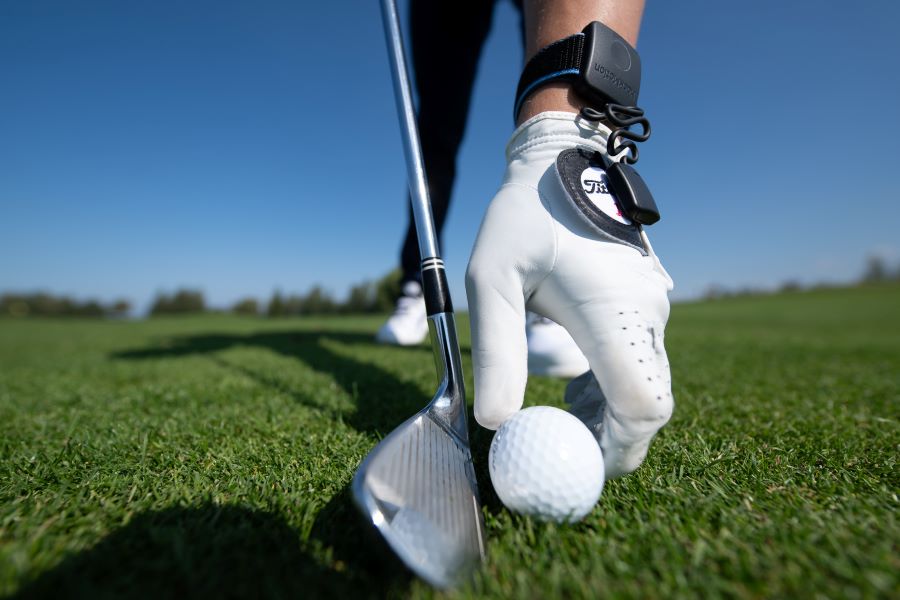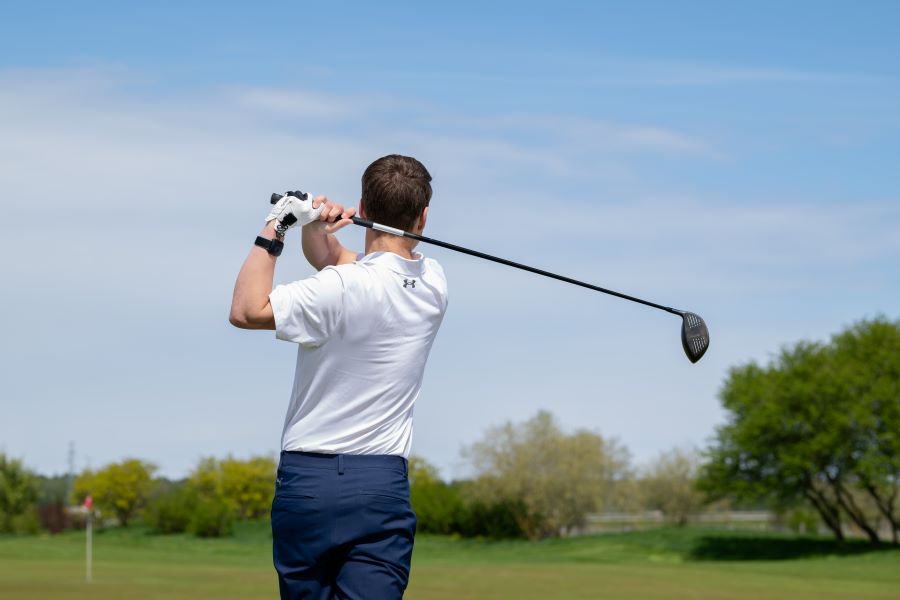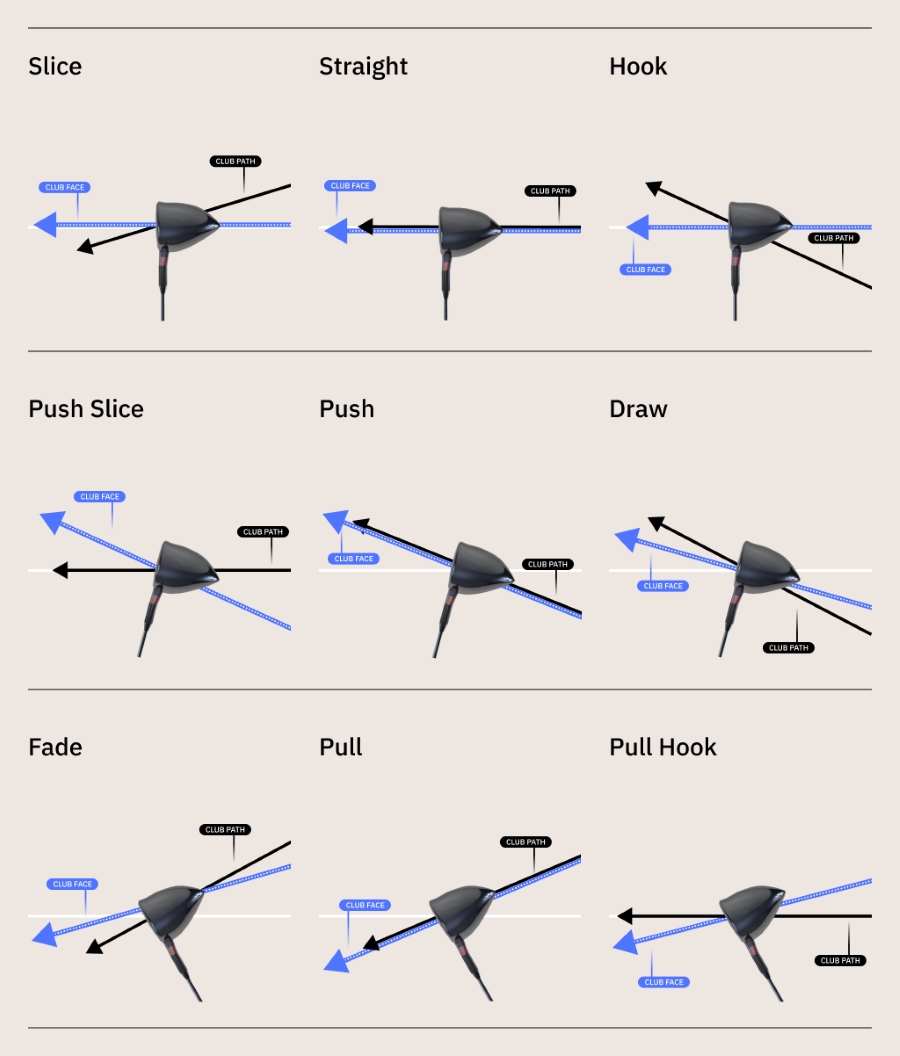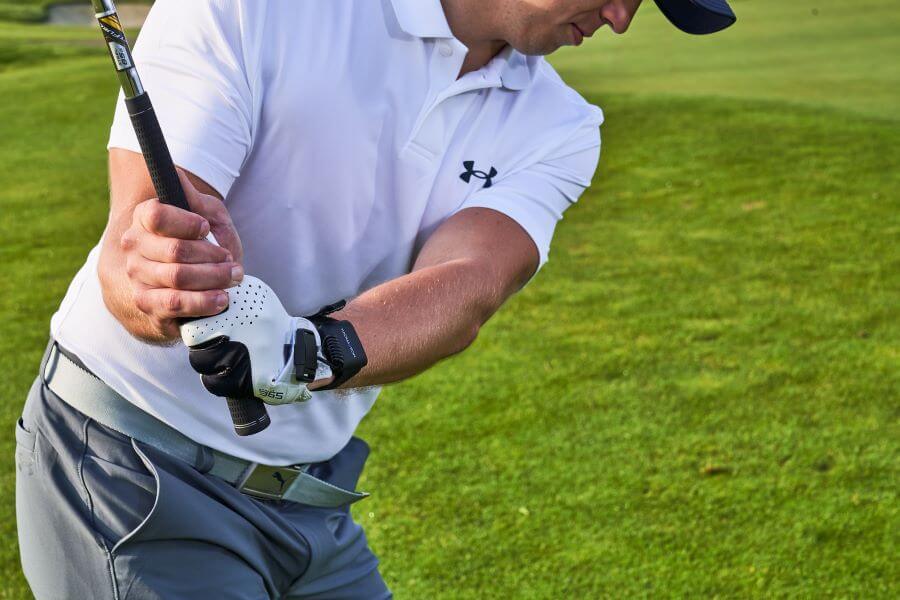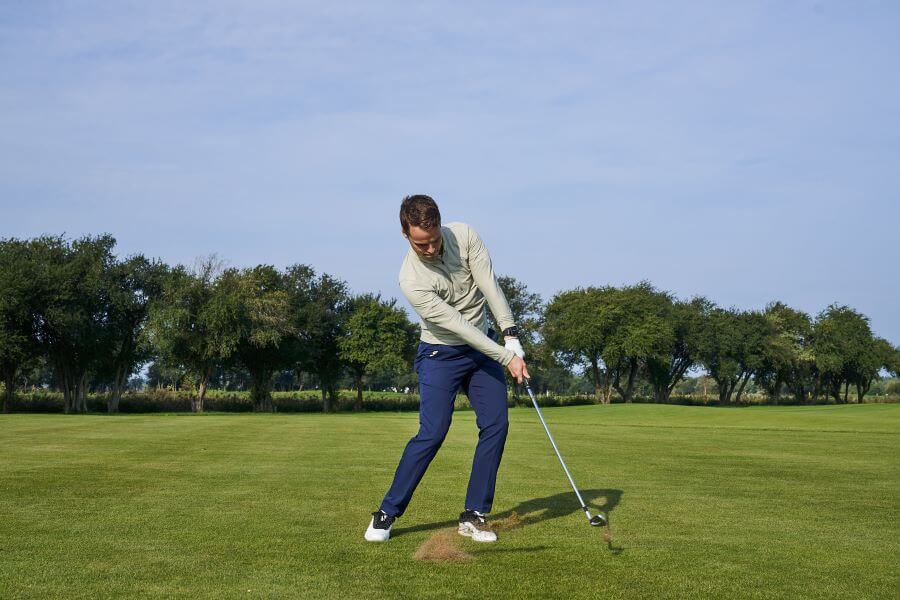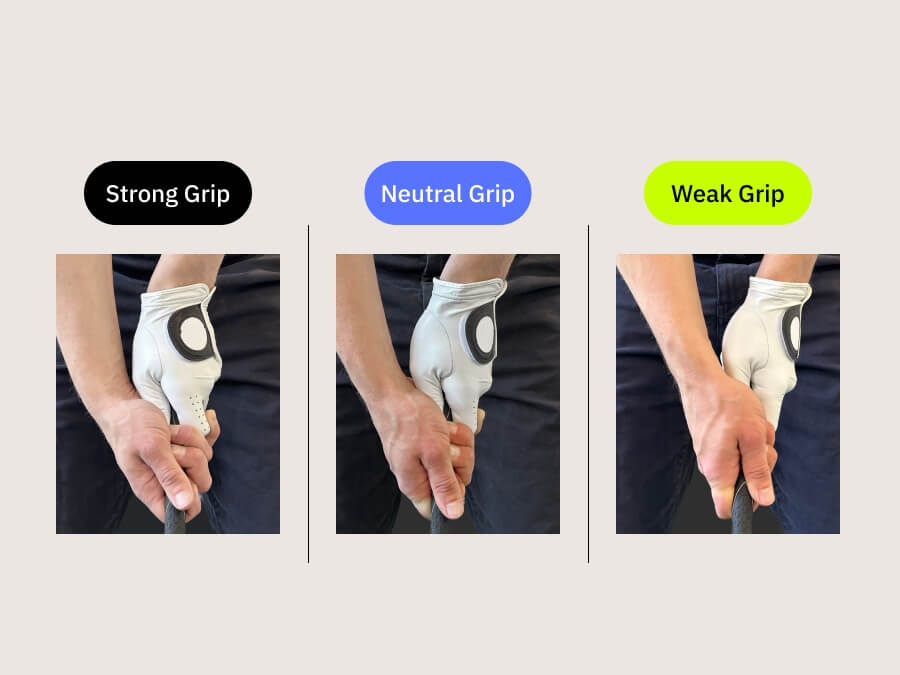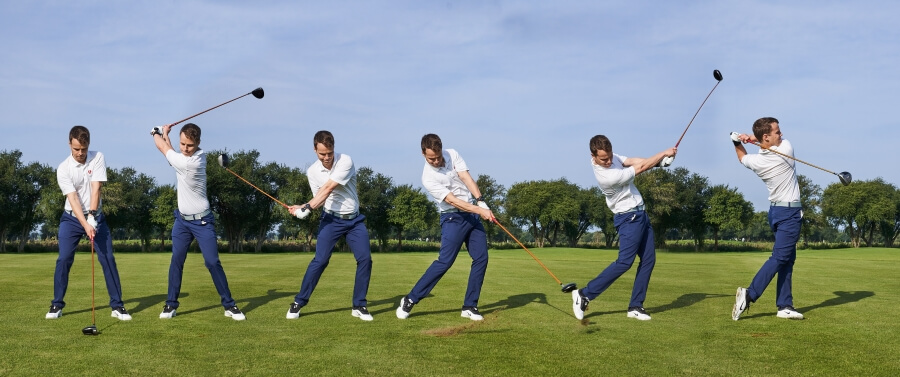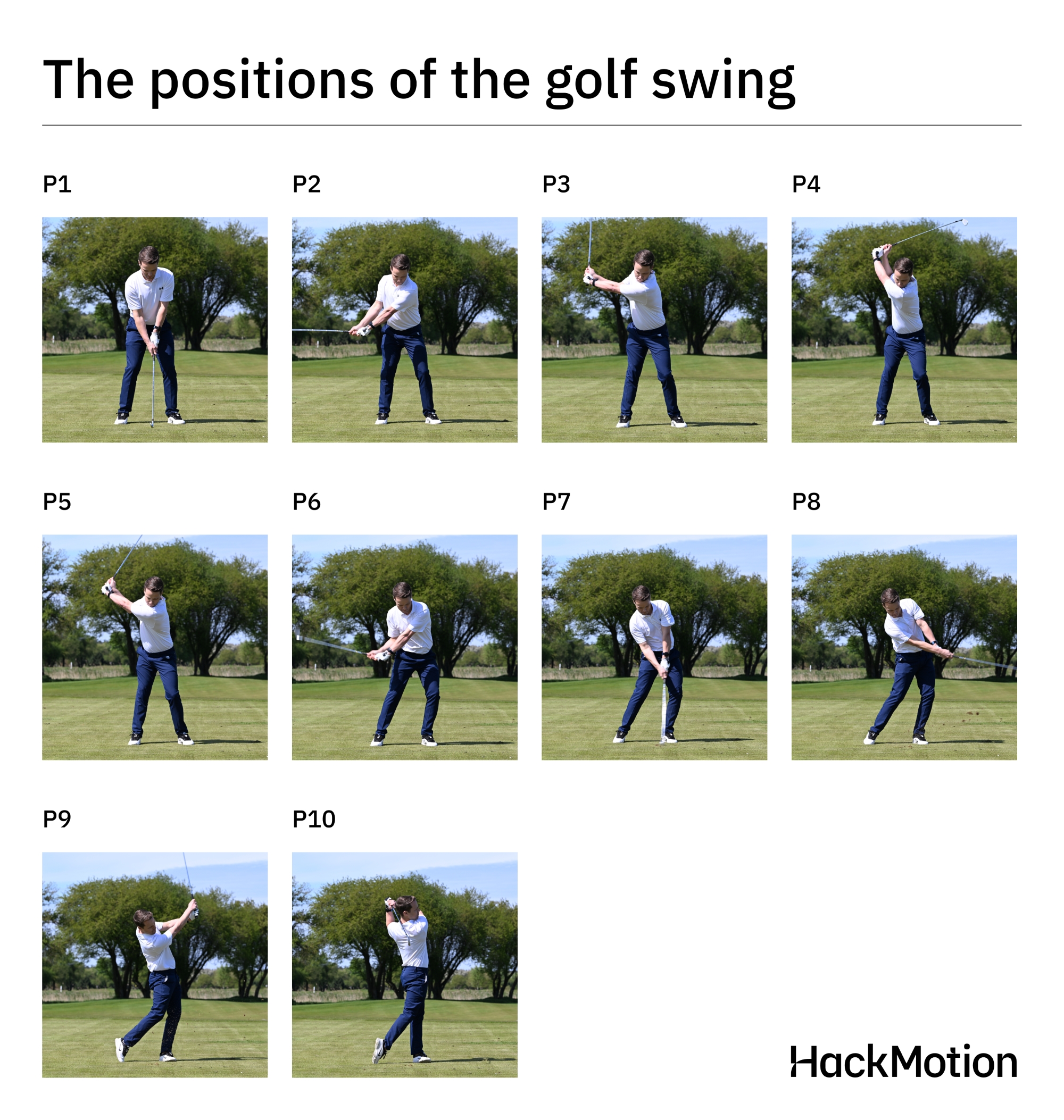Achieve Proper Shaft Lean at Impact: Why It Matters and How to Get It Right
You probably have the general idea that having forward shaft lean at impact is important. But why?
Shaft lean at impact is what allows you to keep the clubface square through impact for the longest period of time. If you had the option for a longer square clubface, wouldn’t it make it easier to hit straight shots? Absolutely.
The problem is that most amateurs try to achieve more shaft lean at impact the wrong way.
After analyzing more than 1,000,000 golf swings using the HackMotion device, we’ve learned exactly how to position the shaft at impact and how much forward shaft lean you should have.
Shaft Lean at Impact – Key Takeaways
- Shaft lean at impact is necessary to compress the ball, maximize distance, and achieve optimal ball flight.
- A slight shaft lean at setup will help you return to this position at impact.
- The amount of flexion or bowing in your lead wrist at impact directly affects the amount of shaft lean.
- The lead wrist is more flexed at impact than at address, meaning the club handle will be a bit higher and the lead wrist more bowed than at address.
- Proper swing sequence and timing are essential to maintain shaft lean at impact.
- Practicing with the HackMotion device and swinging in slow motion is like having a golf coach with you, ensuring you achieve the correct shaft lean.
If you prefer to learn via video, take a look at the mistakes and fixes, Rob Cheney talks about in this video about shaft lean at impact.
Contents
Most Common Mistakes in Creating Shaft Lean at Impact
Most amateur golfers understand that the shaft being forward at address is important.
All it takes is one or two small chips around the green to realize that this is really the only position for the golf club at impact that makes sense.
However, many mistakes still happen when players try to create shafts lean at impact.
Too Much Shaft Lean at Address
A little bit of shaft lean at address is great. However, if you add too much shaft lean, you will put yourself in a position you can’t recover from.
Place the hands slightly in front of the golf ball. Check your address position continually by using the HackMotion device.
HackMotion records wrist data at address, and you can use this to see if you are creating a consistent address position.
Hinging Too Quickly in the Backswing
One of the best golf swing tips is to let your hinge in your wrists hinge naturally. Instead, focus on the right arm’s position and the right wrist staying bent.
You will get to a much better place at the top of the backswing if you focus on that as opposed to a hinge as your first movement away from the ball.
Too Much Extension at the Top of the Backswing
At the top of the backswing, many amateur players have added too much extension in their wrists.
From this position, it’s hard to square the clubface, and shaft lean is probably not going to happen.
Look at players like Jon Rahm, Collin Morikawa, and Dustin Johnson to see how they have more flexion than extension at the top of their backswing.
Although we all don’t have the same wrist flexibility or grip position that they do, getting your position at the top to have less extension is the goal.
Improper Wrist Action Throughout the Swing
Wrist action, in general, is often overlooked by amateur golfers as it can be a little difficult to understand at first.
When using HackMotion, you can quickly learn the proper patterns that all great players are using and apply them to your swing.
There is no perfect wrist angle or wrist position in golf. The shape of your hands, wrists, arms, body, and individual playing styles comes into play here.
However, learning proper wrist action and then developing it with HackMotion training will absolutely lead to more shaft lean at impact.
How to Create More Shaft Lean at Impact
If you are a golfer who struggles with getting enough shaft lean you’ll need to learn some adjustments that help you get your consistency back.
Here is how to create more shaft lean at impact.
Step 1: Recognize the Difference Between Horizontal and Vertical Motions
First, you should be able to recognize horizontal and vertical motions.
Wrist hinging and bending are not the same thing. There is a clear difference between the motion wrist hinging and bending created.
- Wrist hinge (adding radial deviation) moves the shaft vertically.
- Bending the wrists back and forth (extension/flexion) moves the shaft horizontally.
The bending of the wrists is the key motion you should be optimizing for when working on creating shaft lean at impact. With this bending (extension/flexion) of the wrists, you can control the clubface; the wrist hinge does not provide this same amount of control.
If you are looking for additional explanation on how wrist motion affects the golf swing, read about the role of wrist angles here.
Step 2: Know What Proper Shaft Lean Looks Like
The shaft should be pushed forward slightly at address and again at impact, but the motion is not exaggerated. In fact, when the shaft lean is exaggerated, it can cause issues with ball flight and direction.
At impact, the hands are pushed just forward enough that they are in line with your lead leg. Setup to hit a shot and then rotate forward to the position you will be at impact. You should notice that your left wrist didn’t hinge at all; in fact, all it did was bow a little more, decreasing even more of the extension.
This is why flexion and extension of the wrists should be your primary concern in your golf game.
Step 3: Understanding the Wrist Hinge
As you swing a golf club back, at some point your wrists will hinge. This motion helps to give some of the vertical plane that we need in the swing. Hinging can also be a source of power if done correctly.
However, you should not focus on the hinge to create shaft lean. Instead, you need a repeatable pattern for flexion and extension.
The lead wrist should lose a certain amount of extension during the swing. Whether the lead wrist should be completely flat at impact depends on your grip strength (stronger grips have more lead wrist extension throughout the swing).
Based on HackMotion data and insights from the world’s leading golf coaches and top players, we have been able to identify that pros do 2 things to control the clubface:
- Maintain stable extension from address to top.
- Consistently decrease wrist extension before reaching impact.
On average, pros decrease extension by around 20-25 degrees from top to impact. By removing the extension, pros also get their hands ahead of the ball at impact.
Step 4: The Role of the Body
At HackMotion, we deal a lot with the wrists and how they control the clubface. However, the legs and lower body rotation play a huge part in all of this.
If you can get your wrist extension so it remains stable from the address position to the top of your swing and then decrease on its way down to impact, you will be able to use your body to fire through impact.
For golfers who forget to incorporate the lower body, the core, and the hips, the consistency and the power just won’t be there.
The body plays a huge role in everything you do in golf. Start your golf swing with some lower body rotation, and you will find it easier to get the club to a position where you have more shaft lean at impact.
Drills to Get the Perfect Amount of Shaft Lean
There are a variety of drills and training aids out there in order to get more shaft lean at impact.
One of the most famous options is an impact bag. With the impact bag, you get resistance at impact, which helps you see where your wrists should be.
We like to take a bit more of a technology-based approach to this and use the HackMotion feedback to perfect the amount of shaft lean at impact.
HackMotion Training
Step 1: Determine the Baseline
Start by hitting 10 to 15 shots with a club like a 7 iron while wearing your HackMotion device. As you practice, the data will record.
Step 2: Compare Your Numbers
There are two things to look for:
- How much extension did you add in your lead wrist from the setup position to the top of the backswing?
- How much less extended are you at impact than you were at address?
If you have not added much extension from setup to the top, that’s great. Move on to what is going on through impact. Professional golfers have less extension at impact than they do at address.
Not adding extension as you take the club back only makes it easier to decrease it as you move through impact.
Step 3: Set Your Ranges for Feedback
Now that you have your data and can see where your faults are, set the HackMotion feedback to get your wrist angle in range.
The HackMotion will make a noise or vibration indicating that you are in the proper range.
Slow Motion Swing Drill
Mr.Short Game put together a great training video to help promote more shaft lean at impact. With this drill, you will wear your HackMotion device and take very slow and exaggerated swings to increase shaft lean at address.
If your lead wrist is flat or slightly flexed, you are creating shaft lean at address. With HackMotion, you can set the range so that you are alerted anytime the wrist positions are incorrect.
As you slow down the motion, you can increase your speed and try to maintain the same feeling. Go back and forth between fast and slow to get the proper feeling of flexion at impact and forward shaft lean.
FAQs
How much forward shaft lean should you have at impact?
At impact, it is best to have your hands in front of the ball, your lead wrist in a flexed position, and your hands in line with your lead leg.
Why can’t I get a forward shaft lean in my golf swing?
Most golfers that struggle with forward shaft lean in golf also struggle with too much extension in their lead wrist; this often leads to an open clubface. As you are moving through impact, the tendency is to flip the club and close the face, but that motion adds extension instead of flexion.
Should you have a forward shaft lean with driver?
Excessive shaft lean in a driver is a problem. However, you won’t want your hands to be behind the ball at impact, either. Very little or almost no shaft lean is acceptable, but don’t reverse this concept and take the hands behind the ball with the driver.
Does forward shaft lean increase distance?
Forward shaft lean can increase distance because the clubface is square and the golf ball is compressed. There is no benefit to exaggerating forward shaft lean; at some point, you will deloft the club so much it loses forgiveness and ball flight.
Final Thoughts
At this point, you should understand why your golf swing has had issues with shaft lean at impact. If you have been thinking about this concept incorrectly, you are certainly not the only one.
Shaft lean at impact takes a bit of time to learn, and the best way to do so is by working with the HackMotion device. The wrist angles at address, the top of the backswing, and impact give us so much insight into why a golf ball does what it does.





